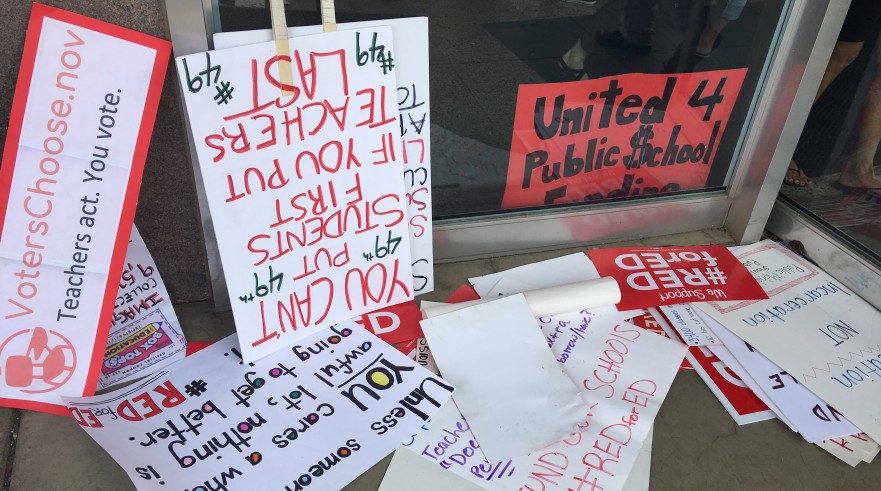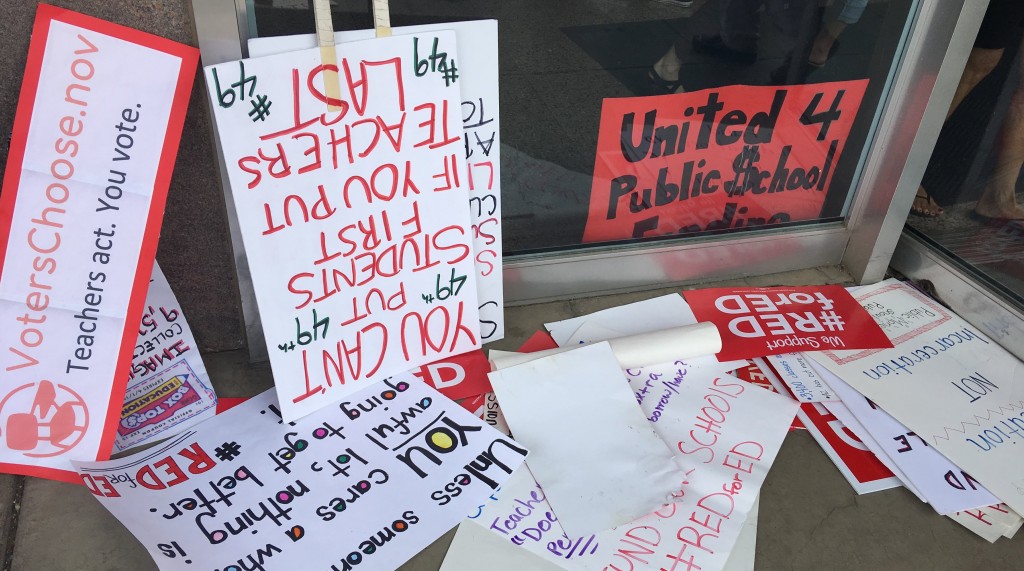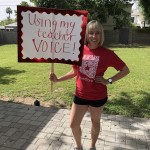Over the past six weeks or so, I have served as site liaison for Arizona Educators United as the Red for Ed movement evolved from t-shirt activism to an unprecedented statewide walkout of Arizona teachers. It has been an intense experience, and I am glad to be back in class, but I feel honored to have been a part of it, and I have learned a lot. Namely:
- To understand politics, you have to watch a process. A “no” vote on a bill or amendment you championed could actually represent support for what you value most. Most who voted against the budget that puts approximately ½ billion new dollars into education for next year weren’t voting against educators, but holding out for better policy, such as sustainable new revenue sources for education.
- Once the elementary teachers get angry, there is no stopping them. I have been teaching at the secondary level my entire career, but am in awe of elementary teachers’ ability to organize, collaborate and engage families. The scenes I saw during the walk-ins on elementary campuses, with parents arm-in-arm with teachers demonstrating their commitment to kids honestly had me misty-eyed.
- Social media has made anything possible. We organized a loose movement into a walkout in a handful of weeks. The multiple open and closed discussion groups, pages and texting apps made it possible for the leaders to strategize, delegate, encourage and communicate next steps while most of us were still getting the word out, hashing out ideas with our friends and families and hearing multiple perspectives in the discussion groups.
- Our state teachers’ association has an important role. There was a lot of disagreement at times over the role of the state association, whether they were “taking over” the movement or going for a “power grab.” But honestly, without the district relationships, access to funds for printing signs and renting port-a-potties, and the organizational knowledge about things such as event permits, security, and other strategic and practical aspects of the rallies, I am not sure that we could have organized our campuses, or that those big events could have come together.
- This type of activism is intense. Trying to organize my colleagues while acting within the bounds of ethical behavior on campus, and maintaining communication once actions such as the walk-ins and stand-outs started happening, was tricky. Continuing to teach each day and move my students forward in their learning at the same time was double-tricky. Once the walkout began, keeping up with the day’s events, what leadership was saying and making sure my site was informed was more than a full-time job. It is a relief to be back at school connecting with my students. I will continue to advocate for them, and am proud of what we have accomplished, but I am glad to be back.
- Bonus Item: I come back to school with a greater knowledge of the people I work with, their caliber, their commitment to students and our interdependency. We know our strength, and we will not relinquish it.











Comments 5
No kidding, on all counts. One I’d add is how encouraging it was to see our newest colleagues – teachers in their first few years – engage completely. It shows that they see their work as going beyond to classroom into leadership and policy.
Loved this blog and enjoyed this extra point here!
I really liked the point about communicating through social media. Our school is more connected now than we have ever been before. I think this will be helpful for other advocacy events in the future. Many professionals can openly discuss political issues with friends at work. Teachers do not have this luxury since public resources like time at work, email, copy machines, etc are not to be used to advance any political agendas. This can be limiting. Now that we have had a good reason to connect outside of work, I think we can work harder together to advocate for the profession and the kids we serve politically.
One downside that came out of this for some groups is that they experienced disagreements in those spaces. I was sad to hear from colleagues in other organizations that were trying to navigate those tough situations. On the contrary, I saw my site banded together with fierce loyalty and an openness to support each other’s best interests no matter what they were. As teachers shared whether they were staying out additional days or returning to work, everyone had their back. I thought that was really classy. It made me so grateful for those I work with–and I hope we can all work across the state to create these types of supportive environments in our workplace. We have to use good behavior in joint discussion spaces and hold others accountable to do the same.
I also feel lucky that our site came together. I know there was a lot of trepidation among classified staff, and there still is, but we were able to communicate our concerns and that really helped. I know it wasn’t so easy everywhere. I was really anxious/nervous when we first started out because I was worried about some of those types of conflicts… but apparently at our site this movement was needed because majority were on board.
This is a great post. As someone who first started her career in 1981, I must say the organizers of this movement did more in 7 weeks, than the education community has been able to accomplish in the last 30 years. The most important thing is to now stay engaged and VOTE. Not just vote…but make it an educated vote. Get to know the issues…get to know the candidates. Look beyond party and your own perceptions. Working together, anything is possible.